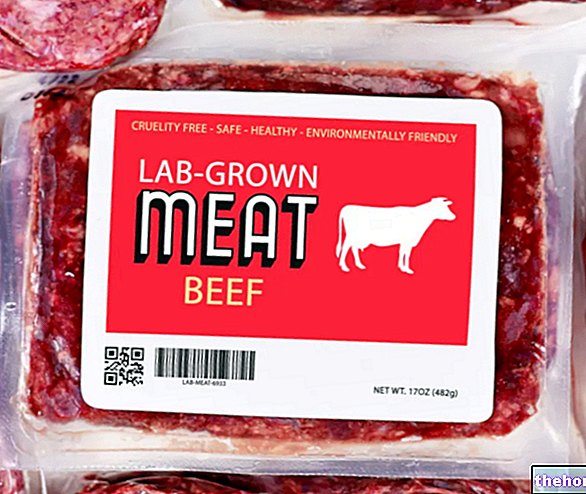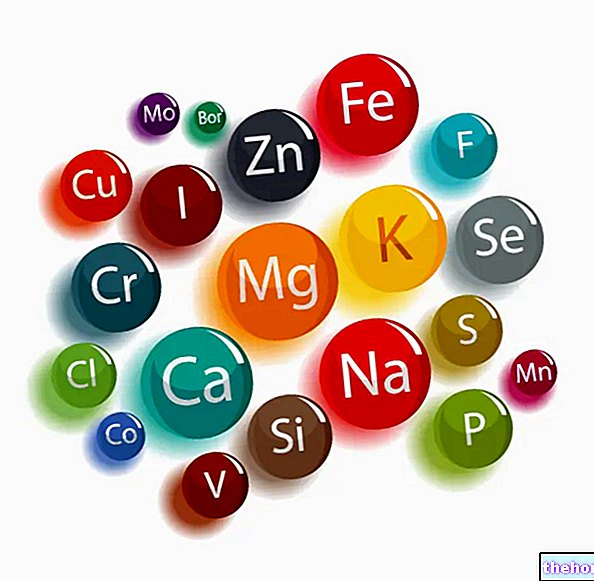Sodium chloride
Sodium chloride is the chemical name of the most commonly known "cooking salt"; it is the sodium salt of hydrochloric acid, which is crystalline and colorless to the eye, and is characterized by its typical color and flavor.

Table salt is readily available in nature, both as a terrestrial crystal (rock salt) and as an electrolyte for sea water, from which it can be extracted directly (desalination) or indirectly from the crystals deposited on the ground. One of the most ancient methods for collection of cooking sea salt is the solar evaporation of sea water, carried out in the so-called salt pans; furthermore, in the production of sea salt a certain refining is carried out, which involves the separation, therefore the exclusion, of other types of salt from sodium chloride. Artificially, the evaporation of the water can be obtained through the use of electric current.
Types of cooking salt
Table salt can be classified according to the
Nature of origin:
- Marine: of marine origin
- Terrestrial: of terrestrial mineral origin
Refining degree:
- salt refined: 99.9% of NaCl
- salt whole wheat: natural, free from refining; contains: iodine, magnesium, sulfur, zinc, copper, phosphorus etc.
Ionic composition:
- salt low sodium: it is more deficient in sodium (Na) to the advantage of potassium (K); frequently recommended to combat arterial hypertension
- salt asodic: totally sodium free; it too finds application in the fight against arterial hypertension
- salt iodized: it is added in iodine; it is a widely consumed dietary salt. Its use has been suggested for the fight against iodine deficiency in the population and for the reduction of related thyroid complications.
Salts processed
- Gomai: type of oriental salt added in toasted sesame seeds or seaweed.
Nutritional aspects
Kitchen salt, as already explained, is the result of the crystallization of sodium (Na) and chlorine (Cl) in proportions of 40% and 60%; it follows that for every gram of cooking salt, 0.40 g of sodium and 0.60 g of chlorine are introduced.
On a nutritional level, unlike what happens for other micronutrients, for both sodium and chlorine it is quite easy to reach the recommended intake levels (LARN), which are respectively:
- Na + - 575-3500 mg / day for adults (but not less than 69-460 mg / day) equivalent to 1.5-8.8g of table salt)
- Cl- - 900-5300 mg / day for adults (1.5-8.8g of table salt)
In case of frequent use of integral salt (rich in other ions), low sodium (containing K) or iodate (containing iodine), the levels of intake of other electrolytes are proportionally increased to the detriment of sodium chloride. The minerals of greatest nutritional interest are:
- Potassium (K): main intracellular cation; fundamental for the trans-cell membrane passage of molecules against concentration gradient, and for the maintenance of the acid-base balance. The minimum intake is easy to reach (1600 mg / day), while the excess is PHYSIOLOGICALLY unlikely; however , it is recommended (especially in the presence of impaired renal function) NOT to abuse salt containing potassium as it could be a source of excessive intakes.
- Iodine (I): fundamental constituent of thyroid hormones, therefore its function is mainly of bio-regulation. The shortage is widespread and almost ubiquitous among the regions of the Italian peninsula; this, if severe, can cause "thyroid goiter" and in order to prevent its onset it is recommended to take AT LEAST 150 µg / day of iodine. In pregnancy it would be advisable to reach a further surplus of 25 µg / day.
- Magnesium (Mg): it is very important in many metabolic processes and also in the energy-dependent trans-cellular membrane transport; moreover, magnesium makes up more than 300 different enzymes. The minimum intake of magnesium can be around 210-320mg / day, but a safe range of 150-500mg / day is recommended.
NB. The levels of intake reported above refer to the general population; Athletes and sportsmen may need (based on the volume, intensity and importance of sweating) significantly higher saline supplies.
Other articles on "Cooking Salt - Types of Salt and Nutritional Aspects"
- Sodium: Deficiency, Excess and Hypertension
- Salt, Sodium and Hypertension




























